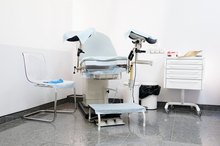What does fact checked mean?
At Healthfully, we strive to deliver objective content that is accurate and up-to-date. Our team periodically reviews articles in order to ensure content quality. The sources cited below consist of evidence from peer-reviewed journals, prominent medical organizations, academic associations, and government data.
- Centers for Disease Control and Prevention: Gonorrhea - CDC Fact Sheet
- National Institute of Diabetes and Digestive and Kidney Diseases: What I Need to Know About Urinary Tract Infections
- Centers for Disease Control and Prevention: Antibiotic-Resistant Gonorrhea
The information contained on this site is for informational purposes only, and should not be used as a substitute for the advice of a professional health care provider. Please check with the appropriate physician regarding health questions and concerns. Although we strive to deliver accurate and up-to-date information, no guarantee to that effect is made.
Can Cranberry Juice Treat Gonorrhea?
While a gonorrhea infection can cause painful urination similar to a bladder infection, using cranberry juice to treat gonorrhea would be ineffective. Gonorrhea infections require prompt diagnosis and proper treatment to resolve the infection, prevent further spread and reduce your risk of experiencing complications. If you suspect you have gonorrhea, you should seek appropriate medical care.
If you are experiencing serious medical symptoms, seek emergency treatment immediately.
Gonorrhea
The bacteria Neisseria gonorrhoeae lives and thrives in moist and warm parts of the body, such as:
- the urethra
- rectum
- cervix
- eyes
- even the back of the throat
Gonorrhea, also referred to as the clap or drip, is a common sexually transmitted infection in the United States. According to the Centers for Disease Control and Prevention, approximately 700,000 sexually active people are diagnosed with gonorrhea annually 12.
Symptoms
Does Prune Juice Help Bladder Infections?
Learn More
Many people who have gonorrhea do not experience symptoms initially. As the infection grows, men may experience dysuria, or pain with urination; abnormal discharge from the penis; or swollen and tender testicles. Women may also experience dysuria, abnormal vaginal discharge or, in serious cases, pelvic pain. Because one of the more common symptoms of gonorrhea is painful urination, you may mistake a gonorrhea infection for a urinary tract infection.
- Many people who have gonorrhea do not experience symptoms initially.
- As the infection grows, men may experience dysuria, or pain with urination; abnormal discharge from the penis; or swollen and tender testicles.
Cranberry Juice
Cranberry juice is a home remedy that some people use to assist with treatment of bladder infections. Cranberry juice increases the acidity in your urine to make your bladder a more hostile environment for the bacteria that cause bladder infections. Cranberries also appear to interfere with the tendency by bacteria to cling to the inside of your bladder, facilitating your body in flushing out unwanted pathogens as you empty your urine. While cranberry juice may be a useful adjunctive treatment for bladder infections, it will not properly treat gonorrhea infections.
- Cranberry juice is a home remedy that some people use to assist with treatment of bladder infections.
- Cranberry juice increases the acidity in your urine to make your bladder a more hostile environment for the bacteria that cause bladder infections.
Gonorrhea Treatment
The Use of White Vinegar to Cure Yeast Infections
Learn More
Because gonorrhea lives in other warm and moist areas besides the bladder and urethra, you need to take systemic antibiotics to fully treat the infection. Your health care provider might choose to treat you with oral antibiotics or an antibiotic injection. You should follow your health care provider's instructions as your treatment may be different than someone else's. Gonorrhea has developed resistance to certain types of antibiotics in certain areas of the world. Gonorrhea poses a significant public health problem and your state's health department may become involved with your treatment to prevent additional spreading of the disease.
- Because gonorrhea lives in other warm and moist areas besides the bladder and urethra, you need to take systemic antibiotics to fully treat the infection.
- Gonorrhea poses a significant public health problem and your state's health department may become involved with your treatment to prevent additional spreading of the disease.
Related Articles
References
- Centers for Disease Control and Prevention: Gonorrhea - CDC Fact Sheet
- Centers for Disease Control and Prevention: Antibiotic-Resistant Gonorrhea
- Alirol E, Wi TE, Bala M, et al. Multidrug-resistant gonorrhea: A research and development roadmap to discover new medicines. PLoS Med. 2017;14(7):e1002366. doi:10.1371/journal.pmed.1002366
- Centers for Disease Control and Prevention. Sexually Transmitted Disease Surveillance 2017: Gonorrhea. Updated July 24, 2018.
- Centers for Disease Control and Prevention. Gonorrhea. Updated October 25, 2016.
- Azari AA, Barney NP. Conjunctivitis: a systematic review of diagnosis and treatment. JAMA. 2013;310(16):1721-9. doi:10.1001/jama.2013.280318
- Li R, Hatcher JD. Gonococcal Arthritis. Treasure Island, FL: StatPearls Publishing. Updated November 25, 2018.
- NIH National Institute of Child Health and Human Development. What infections can affect pregnancy? Updated January 31, 2017.
- Warner L, Newman DR, Austin HD, et al. Condom effectiveness for reducing transmission of gonorrhea and chlamydia: the importance of assessing partner infection status. Am J Epidemiol. 2004;159(3):242-51. doi:10.1093/aje/kwh044
- Bautista CT, Wurapa EK, Sateren WB, Morris SM, Hollingsworth BP, Sanchez JL. Repeat infection with Neisseria gonorrhoeae among active duty U.S. Army personnel: a population-based case-series study. Int J STD AIDS. 2017;28(10):962-968. doi:10.1177/0956462416681940
- Vickerman P, Peeling RW, Watts C, Mabey D. Detection of gonococcal infection : pros and cons of a rapid test. Mol Diagn. 2005;9(4):175-9.
- Oliphant CM, Eroschenko K. Antibiotic Resistance, Part 2: Gram-negative Pathogens. JNP. 2015;11(1):79-86. doi:10.1016/j.nurpra.2014.10.008
- Centers for Disease Control and Prevention. Morbidity and Mortality Weekly Report (MMWR): Neisseria gonorrhoeae Antimicrobial Susceptibility Surveillance - The Gonococcal Isolate Surveillance Projects, 27 sites, United States, 2014. Updated July 15, 2016.
- Bautista, C.; Wurapa, E.; Sateren, W. et al. Repeat infection with Neisseria gonorrhoeae among active-duty U.S. Army personnel: a population-based case-series study. Int J STD AIDS. 2017; 28(10):962-68. DOI: 10.1177/0956462416681940.
- CDC. "Latest data on Antibiotic-Resistant Gonorrhea." June 14, 2016.
- CDC. CDC Fact Sheet: Reported STDs in the United States, 2016 - High Burden of STDs Threaten Millions of Americans. Issued September 2017.
- Centers for Disease Control and Prevention (CDC). 2015 Sexually Transmitted Diseases Treatment Guidelines: Gonococcal Infections. Atlanta, Georgia; issued June 4, 2015; updated January 4, 2018.
- Lee, K.; Ngo-Metzger, Q.; Wolff, T. et al. Sexually Transmitted Infections: Recommendations from the U.S. Preventive Services Task Force. Am Fam Physician. 2016; 94(11):907-915.
Writer Bio
Marcy Reed has been a certified nurse midwife since 2004 and a writer since 2007. She has been published in "Midwifery Today." Reed earned a bachelor's degree in nursing in California and received her midwifery education in Kentucky.





